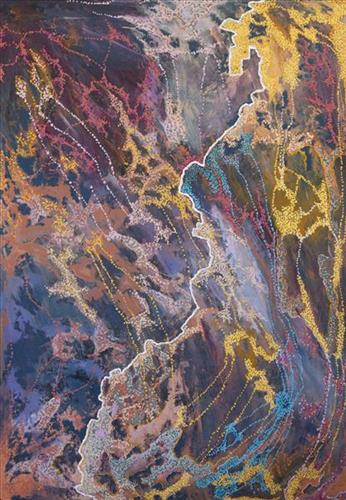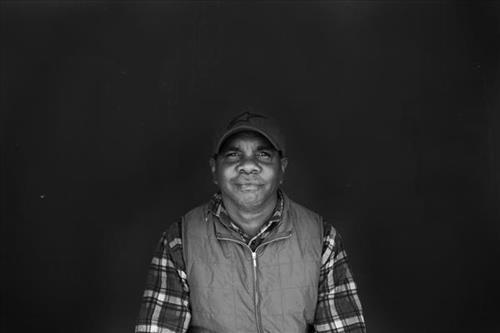111582376633
Waru (fire)
“My painting is about waru, fire. In my grandfathers country they have spinifex, and they burn it, it was an everyday thing for our old people. They used to clean the land, burn, hunt for bushtucker, for goanna, for all bush food. This painting is part of Tayiku, in Kulyakartu area, my grandfathers country. waru is a main thing for Martu people, they burn for new growth, for the hunting and for maintaining the country, cleaning the country where they walk, Waru is a big part of our culture, its been going on for generations.
Through my painting I like to be creative, when I hear stories about people in the bush, families walking, lighting with the firestick and burning the way where they are travelling. It’s a big part of my life as a Martu, we can join our part with what they were doing. Through my art I create my own style of painting, with Waru”
– Derrick Butt
This work portrays an area of Derrick’s ngurra (home Country, camp) represented aerially. It depicts the practice of fire burning as it continues to be used today through the Martu homelands. Over thousands of years, as Martu travelled and hunted on foot they would burn tracts of land, using waru (fire) as a means to assist with hunting and to encourage regenerative growth.
Targeted waru is an important tool in animal tracking. Small burns are lit to clear vegetation, expose burrows, and to allow for access to walk and track readily in exposed sands. Fires are typically burnt during cooler weather in small, controlled areas, reducing the risk of unmanageable, spontaneous bush fires whilst simultaneously providing diverse regenerating habitats. Remaining is a defined mosaic fire scar pattern in the land, across tali (sand dunes), linyji (clay pans), parulyukurru (spinifex country) and pila (sandy plains). This patterning is clearly visible from an aerial perspective, and becomes even more defined as new growth emerges.
The patchwork nature of regrowth is aligned with the Martu cycle of burning and regrowth and its five distinct phases. First is nyurnma (freshly burnt Country), followed after the rains by waru-waru, when young, bright green plants start to grow. Nyukura occurs between one and three years after burning, when plants have matured and are fruiting and seeding. Manguu is four to six years post burning, when spinifex has matured to the point that it can be burned once again. Finally, kunarka signifies the time when spinifex and other plant species have become old growth, and pose a risk of destructive bushfires.




